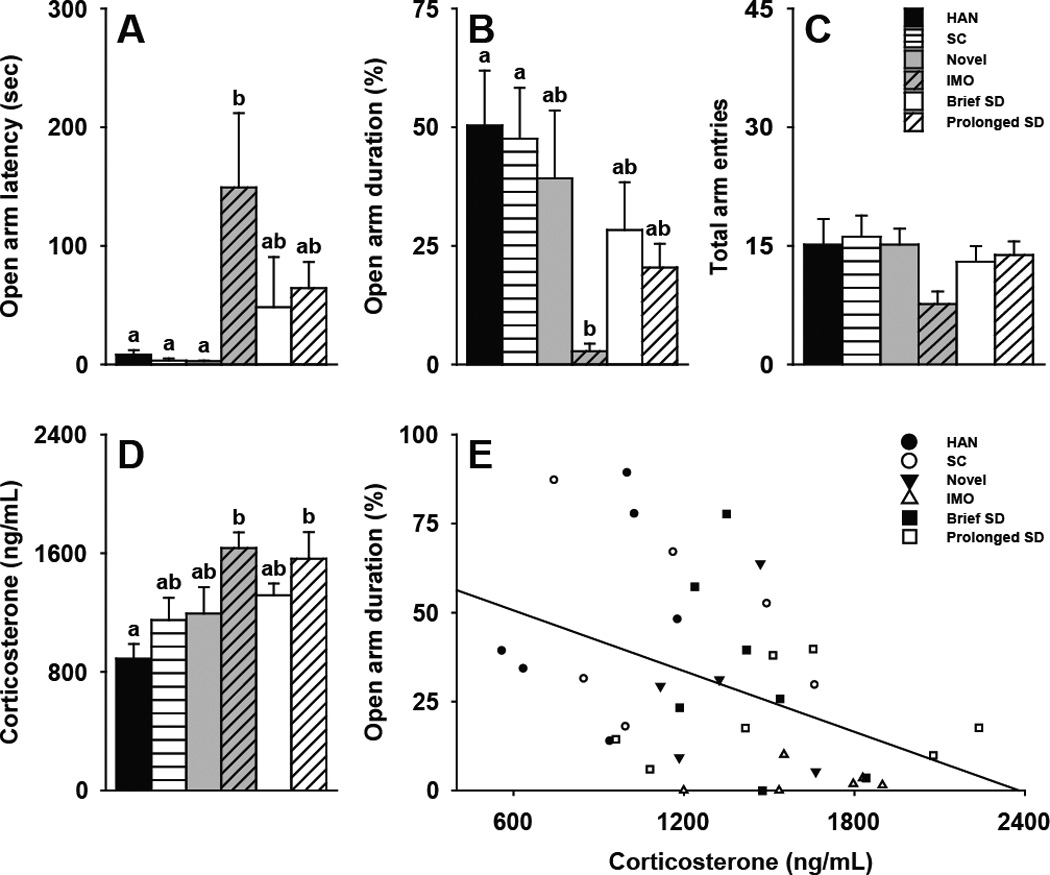Figure 3.

The source and intensity of a stressor affected the biobehavioral stress response. A–B, Only immobilization (IMO) stress led to a (A) delay in the latency of females to enter the open arm and (B) decreased percentage of time that females spent in the open arms during the EPM test. C, None of the stressors influenced locomotor behavior (i.e., total arm entries) during the EPM test. D, Corticosterone remained elevated 30 min post-stress in response to IMO and prolonged social defeat (SD), but not environmental novelty (Novel) or brief SD, in comparison to handled controls (HAN). A–D, No differences were observed between HAN controls or social controls (SC). E, Female plasma corticosterone concentrations were negatively associated with the percentage of time females spent in the open arm in the EPM test. Bars labeled with different letters differ significantly by Gabriel's post-hoc test in which a significant main effect was detected in the ANOVA (p < 0.05). A–D, Data are expressed as mean ± SEM.
